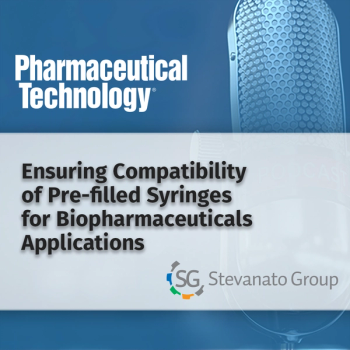
Sartobind Membrane Adsorbers sponsored podcast
Sartobind membrane adsorbers are an expedient and effective option for chromatographic removal of contaminants from a process feed stream. Built on a membrane of regenerated cellulose, Sartobind is available in strong anion and cation , hydrophobic interaction and salt tolerant anion exchange versions.
Sartobind membrane adsorbers are an expedient and effective option for chromatographic removal of contaminants from a process feed stream. Built on a membrane of regenerated cellulose, Sartobind is available in strong anion and cation , hydrophobic interaction and salt tolerant anion exchange versions.
The exceptional performance of Sartobind begins with the membrane structure itself. The pores in the cellulose matrix are of 3-5 microns in size, meaning that diffusion and residence time are not the limiting factors they tend to be with gel chromatography resins. The large pores result in high flow rates, allowing both rapid membrane preparation and shorter processing times. Polishing, or the removal of contaminants from a feed stream, is a flow-through chromatography step that is ideally suited for the use of Sartobind and various applications will be discussed.For polishing applications, capsules with 4 mm membrane bed height are available from 0.08 bed volume to 1.6 L. This short bed-height allows flow rates as high as 30 times the bed volume or 48 liters/minute for the 1.6 L capsule.
Polishing, or removing DNA, endotoxin, viruses, host cell proteins, and residual protein A in a flow-through chromatography step is easily accomplished with anion exchange membranes, specifically Sartobind Q or Sartobind STIC. These low concentration contaminants can be removed effectively at high flow rates precisely because diffusion is negligible on Sartobind. In low or no salt conditions, Sartobind Q can remove greater than 2 logs of DNA, endotoxin, and host cell proteins, and greater than 5 logs of model viruses. Sartobind STIC achieves the same log reductions in contaminants, but in sodium chloride concentrations of 150 mM or even higher for some applications. Using Sartobind STIC in polishing applications means cost and time savings, as product conditions do not need to be changed to remove salt. Sartobind STIC is an excellent choice for single-use polishing applications, saving time in preparation, use, and disposal.Although many of the advantages of Sartobind are realized at large scale, scale down cartridges of 0.08 ml and 1 ml are available as well as 96 well plates for development work. These plates are ideal for design-of-experiments work and are available in ion exchange, salt-tolerant anion exchange, and hydrophobic interaction chromatography versions. Coupled with the powerful chemometrics software from our strategic partner Umetrics, DOE utilizing 96 well plates can save time and money when scouting a process.
For polishing applications, Sartobind is the technology of choice. For additional information on these or any other applications, please contact your Sartorius Bioprocess representative.
Newsletter
Get the essential updates shaping the future of pharma manufacturing and compliance—subscribe today to Pharmaceutical Technology and never miss a breakthrough.



